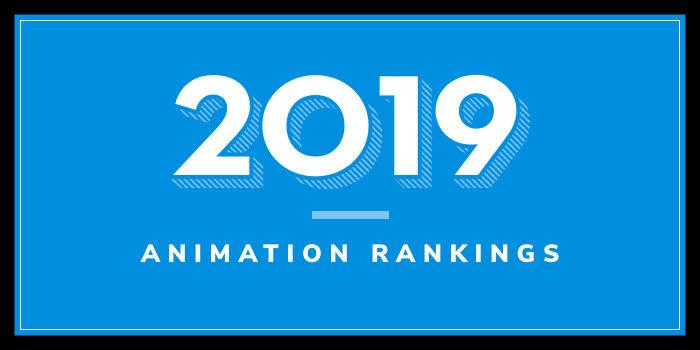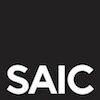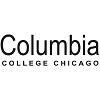
What are the top Illinois animation schools?
| Ranking | School | City |
|---|---|---|
| 1 | School of the Art Institute of Chicago | Chicago |
| 2 | DePaul University | Chicago |
| 3 | Columbia College Chicago | Chicago |
| 4 | University of Illinois at Chicago | Chicago |
| 5 | Southern Illinois University | Carbondale |
Our 2019 rankings of the top 5 animation school programs in Illinois. For an explanation of the ranking criteria, click here.

Founded in 1866, the School of the Art Institute of Chicago (SAIC) is one of the oldest accredited independent schools of art and design in the country. Serving 3,640 students from 67 countries, SAIC offers more than 50 areas of study from Animation and Costume Design to Visual Communication Design and Writing, through 18 departments. The Film, Video, New Media, and Animation Department (FVNMA) offers several programs for aspiring animators including BFA and MFA in Studio degrees with a Concentration Animation, and a Certificate in Studio.
Per the school, the FVNMA Department at SAIC “endorses and encourages experimentation with radical form and content.” The Department says that it is “open to many approaches to and understandings of experimental media art” and it is “dedicated” to helping students develop their “art practice in a variety of forms and contexts including the use of high definition video, new media art, experimental 3D animation, hand-drawn animation, and filmmaking.” The Department also says that it supports “individual and collaborative forms of making media art in these expanded contexts.”
SAIC FVNMA instructors are “award-winning pioneers, revolutionaries,” and working professionals in the fields of experimental film, video, animation, nonfiction, narrative, installation, glitch, interactivity, art games, curating, archiving, and web-based art projects. Students will also learn from “internationally renowned artists, critics, historians, and curators who regularly visit through the department and SAIC's Visiting Artists Program.”
Other FVNMA Department highlights include graduate projects and fall and spring critique weeks for MFA students, access to world-class resources such as the Art Institute of Chicago Museum, on-campus galleries, and state-of-the-art facilities. Specifics include The Video Data Bank—the leading resource in the United States for videos by and about contemporary artists, The Gene Siskel Film Center—one of the country's premiere screening venues dedicated to promoting alumni, student, and faculty work, and The Donna and Howard Stone Gallery for Film, Video, and New Media in the Art Institute of Chicago's Modern Wing.
Famous SAIC alumni include David Sedaris, Georgia O’Keeffe, Elizabeth Murray, Richard Hunt, Michelle Grabner, Cynthia Rowley, Nick Cave, Jeff Koons, and LeRoy Neiman.

Established in 1898, DePaul University serves nearly 22,500 students from across the U.S. and about 70 countries. The school offers 300 programs of study across 10 colleges and schools and two campuses in Chicago. The College of Computing and Digital Media (CDM) houses the School of Cinematic Arts, home of the animation program. With thirteen full-time animation professors, the School has one of the largest full-time Animation faculties in the US.
Program options for aspiring animators include BA, BFA, MA, and MFA degrees in Animation.
Several concentrations are available including Game Art, Traditional Animation (hand-drawn and stop motion), 3D Animation, Storyboarding and Character Design, Technical Artist, and Motion Graphics. A VFX Concentration is also available within the Film and Television BFA and the school also offers a Game, Cinema and Animation Summer Academy for high school students interested in animation, with tracks in Hand-Drawn, Stop Motion, and 3D Animation for Games.
The BA in Animation “emphasizes the art of animation, creativity, and critical thinking—while encouraging experimentation in form, content and medium—within a broad Liberal Arts context.” To develop their animation skills, students will produce live action videos, draw web-based shorts inspired by Hollywood or anime, or design motion graphics for film titles and commercials.
Designed for students who are serious about careers as animation artists, character animators, game artists, CGI effects animators, and motion graphics animators, the BFA in Animation provides a “thorough foundation in the art of animation and its history, combined with intense practice in traditional animation (hand-drawn, stop motion, and hybrid), and 3D computer animation and modeling.
The MA in Animation “provides a combination of artistic and technical training that prepares students for a future in 3D character animation, traditional animation, computer game art, or visual effects.” The MFA in Animation is the “premier degree” of the graduate program. It’s designed for students who are interested in “creating original animated films and artwork as their main vocation, and is the terminal degree in the field.”
DePaul Animation students can apply to participate in the Animation Summer LA Quarter. This ten-week immersion program is structured around living in student housing, taking classes on a historic studio lot, and interning at high profile animation studios. The experience teaches students how to navigate the studio system and helps them build a network of professional contacts. Past participants have interned at Warner Brothers, DreamWorks Animation, Sony Studios, Disney, Nickelodeon, The Mill, The Jim Henson Company, Titmouse Animation, Bix Pix Animation, and others. Back at home, students will also benefit from CDMs relationship with Chicago’s largest game development and animation studios.
Graduates of the Animation programs at DePaul have been hired in animation roles at companies such as DreamWorks Animation, Laika Studios, Google, Blizzard Entertainment, Phosphor Studios, Wargaming, Nickelodeon, Electronic Arts, and Synapse Games, to name a few.

Established in 1890, Columbia College serves more than 7,300 students from nearly every state and more than 60 countries. The school has over 100 academic majors or programs across several schools and more than 20 departments. Schools include the School of Media Arts, the School of Fine and Performing Arts, and the School of Liberal Arts and Sciences. The School of Media Arts is home to the Interactive Arts and Media Department, which offers several programs for animators.
Options include a BA in Animation with a Concentration in Computer Animation or Traditional Animation, and BFA degrees in Computer Animation and Traditional Animation. Animation and Motion Graphics Minors are also available. Computer Animation students have the option to focus in Visual Effects or Computer Animation. Traditional Animation students may focus in either Hand-Drawn or Stop-Motion Animation.
Sample courses for the programs include Acting for Animators, Alternative Strategies in Animation, Animation for Comics, Animation Layout, Animation Maquettes, Animation Portfolio Development, Animation Production Studio, Cartooning, Cinematics for Games, Character Design and Modeling, Computer Animation: Visual Effects, Digital Animation Techniques, Drawing for Animation, Environmental Design & Modeling, Figure Drawing, Storyboarding for Animation, and The Business of Animated Content.
Students in the BA programs and the BFA in Traditional Animation have the opportunity to either work collaboratively with peers to create a six-minute animated film over two semesters or take any three Animation electives of their choosing. Computer Animation BFA students will collaborate on a team project and develop their own solo short film.

University of Illinois at Chicago (UIC) was formed in 1982 “by the consolidation of two U. of I. campuses: the Medical Center campus, which dates back to the 19th century and the comprehensive Chicago Circle campus which replaced, in 1965, the two-year undergraduate Navy Pier campus that opened in 1946 to educate returning veterans.” Today, with more than 31,600 students enrolled in 250 degree programs and 53 certificate programs across 15 colleges, UIC is the largest university in the Chicago area.
The College of Architecture, Design, and the Arts (CADA) houses the School of Art & Art History, which offers BFA and MFA degrees in New Media Arts and Moving Image, and a dual MS in Computer Science/MFA in New Media. An Art Minor is also available and all programs offer heavy animation coursework. Sample courses include Computer Animation, Film, Computer Graphics, Virtual Reality, 3D Space: Modeling, New Media Arts, Motion Graphics, 3D Space: Animation, Drawing, Interactive 3D, and Human-Computer Interaction.
The College of Applied Health Sciences’ Department of Biomedical and Health Information Sciences (BHIS) offers another option for students that may be interested in a career that fuses science, medicine, and animation. The MS in Biomedical Visualization (BVIS) offers animation electives such as Interactive 3D, Modeling, Animation I &II, Illustration Techniques, Medical Legal Visualization, and Graphic Design.
BVIS is the largest and second oldest of four accredited programs of its kind in North America. Graduates of the BVIS program become highly skilled science visualization specialists in medical illustration, animation, interactive media, gaming, haptics, and virtual and augmented reality, working on the frontiers of discovery.

Founded in 1869, Southern Illinois University, Carbondale (SIUC) serves 14,554 students enrolled in more than 200 majors, minors, and specifications through 11 colleges and schools. The College of Mass Communication and Media Arts houses the Department of Radio, Television, and Digital Media and the Department of Cinema and Photography. The Radio, Television, and Digital Media Department offers a BA in Digital Media Arts and Animation, while the Department of Cinema and Photography offers a BA that covers Documentary, Experimental, Narrative, and Animated Film Production and Studies. An Animation Minor is also available.
Students in the Media Arts and Animation Program will take courses such as Approaches for the Animation Stand, Digital Graphic Foundations, History of Animation, Radio/Audio Production, Sound Mix in Popular Culture, 3D Animation I-III, and Visual Effects in Post. Documentary, Experimental, Narrative, and Animated Film Production and Studies students will take courses such as Media Studies: Moving Image and Cinema, Media Arts: Sound, Media Arts: Performance, Film History and Analysis, and Media Studies: Still Image and Photography. Aspiring animators can between the Digital Media, Cinema and Photography or Photography Specializations. Both programs require 120 credit hours of study to graduate and both offer internship and study abroad opportunities.

